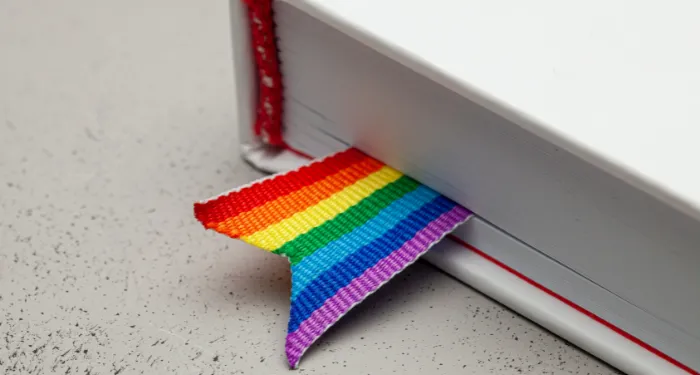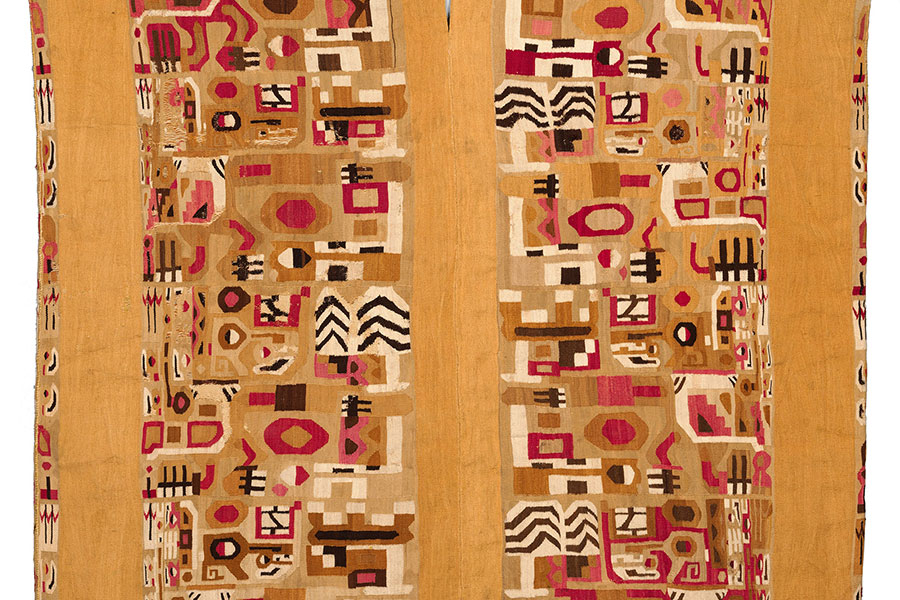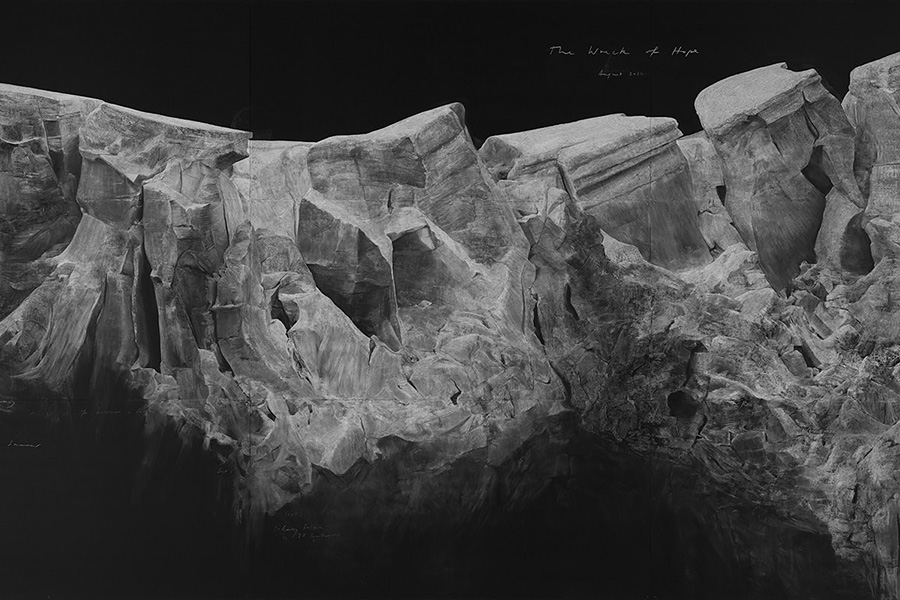Massimo Vignelli wore a chalk-stripe suit. He stood on the stage of Cooper Union’s Great Hall, one hand holding a microphone with a long, snaking cord, the other gesturing at the transit maps projected onto the screen behind him: Munich, Amsterdam, Philadelphia. A brown circle intersected by long colorful lines jutting out in all directions: “The Moscow subway map, which is really a leftover of the Suprematist time,” he explained. The London Underground map designed by Harry Beck, the “father of all contemporary kinds of subway maps.” Then came his own design for the New York City subway, which he had come downtown to defend.
It was April 20, 1978, and Vignelli was taking part in the New York Subway Map Debate. Eight years earlier the Transit Authority had hired him to redesign the subway’s signage, but he quickly took on the map as well. When it debuted in 1972, his subway diagram (it is, technically, too abstract to be a map) met with almost immediate controversy. He had taken geographical liberties—the landmasses are perfectly rectilinear; Manhattan is far too wide—and New Yorkers weren’t happy. In a 1974 letter to The New York Times, one rider complained that the map was “stylized and distorted in a misguided attempt at simplification to the point where one can get only a very general idea of what goes where.”
The Transit Authority set up a Subway Map Committee in 1975; a year later they invited John Tauranac, a native New Yorker who had recently published an MTA city guidebook featuring a geographic subway map, to join. Within a year he was chair. In early 1978 the committee displayed their proposed new map, first in an exhibition titled “The Good, the Bad…the Better? A New York City Subway Map Retrospective” at the midtown Cityana Gallery and then in the American Institute of Graphic Arts exhibition “MASSCOM / MASSTRANS.” After the AIGA show, the Municipal Art Society, a longstanding planning and design nonprofit, reached out to Tauranac and Vignelli with an unorthodox idea: a public debate.
The Architectural League of New York got involved. A panel of experts was assembled. Invitations were sent out. Onstage, neither Tauranac nor Vignelli disguised their dislike of the other’s design. From the transcript of the proceedings, the full text of which was published in a 2021 volume edited by the design historian Gary Hustwit, it is clear that each thought his own approach was far better. “There is no art whatsoever involved in designing a subway map,” Vignelli said. “It’s a problem of communication.”1
Despite his protestations, Vignelli’s diagram is a stunning modernist image, a Piet Mondrian in Morris Louis colors. The four boroughs served by the subway are represented by cream masses floating in beige water and indicated in bold type—a sans serif to match Vignelli’s signage, which is still in use today. (Large white Helvetica text on a black background tells subway riders where they are; colored circles or diamonds containing a number or a letter tell them which trains stop there.) Orange, turquoise, sky blue, salmon pink, the green of Central Park in spring: all cascade in thick stripes down the page. When the lines turn, they do so at multiples of forty-five degrees. Where the trains stop, there is a black dot in the middle of the line. On the ten-by-ten grid, entire squares are blank, and although downtown Brooklyn and Manhattan contain vibrant clusters of stripes, nothing looks overcrowded. The Times described it as “an attempt to untangle a system that on paper often looks as confusing as a mass of spaghetti.”
Until recently this map was a relic, relegated to dorm rooms of design students and dimly lit corners of the transit-obsessed Internet. In 1979 the Transit Authority adopted a version of the Tauranac map instead, designed by Michael Hertz Associates. It was much more geographically accurate than Vignelli’s, featuring streets, parks, and the shape of the land. The subway is overlaid in organic swooping lines, following the paths that the designer Nobuyuki Siraisi drew after riding every track with his eyes closed, the better to feel the curves.
As the subway has evolved over the decades since then, so has the Tauranac map, but the core design principles have stayed the same. Until this month. On April 2 the MTA’s chair and CEO, Janno Lieber, and chief customer officer, Shanifah Rieara, stood on the 42nd Street shuttle platform on either side of a copy of the map on which New Yorkers and visitors have been plotting their journeys since 1979. A countdown, a tearing sound, and the Tauranac map lay crumpled on the station floor. In its place was a very different subway diagram, both new and not. (The MTA has been testing versions of it online for several years now, and on LCD screens in select platforms since 2021.) Designed in-house by the MTA, it heavily references Vignelli’s diagram, using the same forty-five-degree angle rule, the same squashed landmass (including the infamous square Central Park, for which Vignelli caught a lot of flak from Tauranac), and the same one-line-one-stripe system. Gone are the swooping cambers of the subway lines, the ponds in Central Park, and the inlets of Jamaica Bay. Most radically, gone are the streets aboveground.
It was choices exactly like these that most divided the panelists and audience members in Cooper Union’s Great Hall. The debate has come to loom large in design history, but the participants weren’t trying to establish universal rules for cartography, or even for transit maps. They were simply trying to figure out how to represent the New York City subway system on paper so that tourists and natives alike could figure out how to get around.
It wasn’t just the map’s design they discussed. They also took up its format: “Maybe once you get inside the subway train, you don’t need to see a map for the whole system,” suggested Jonathan Barnett, president of the Architectural League. Its placement, too, became a point of contention. The first audience member to speak said:
For forty years, everybody I talk to about subway maps has said the most important thing is to put the damn map up on the street!… Is there nobody in the Transit Authority or MTA who has the guts to go ahead and put the maps where they belong…or do we have to study for another eighty years?
The psychologist Arline Bronzaft was also in the audience, as well as on the Subway Map Committee. In a battle for the microphone with the moderator, she tried to explain a study she had conducted with college and high school students to test the usability of both Vignelli’s diagram and the proposed Tauranac map. Neither did well, but Vignelli’s fared worse.
*
The subway as we know it today is a Frankenstein’s monster of once-separate transit systems. The Brooklyn Rapid Transit Company (BRT) formed in 1896; within four years it had acquired almost all the borough’s rapid transit operations. (It would change its name to the Brooklyn–Manhattan Transit Corporation, or BMT, in 1923 after filing for bankruptcy and restructuring.) In 1904 the first Interborough Rapid Transit Company (IRT) underground subway line opened, running from City Hall in the south to 145th and Broadway in the north. For the next quarter century or so, these two privately owned systems operated in competition with each other, running trains mostly on city-built tracks that the companies leased. Then, in 1932, came the first line of the Independent Subway System (IND), owned and operated by the city itself.
Each system had its own signage, its own maps. The lines were known by names such as the “Eighth Avenue Line” (on the IND) and the “Lexington Line” (on the IRT). In 1940 the New York City Board of Transportation, which ran the IND, took over the BMT and IRT, following a long (and sadly still common) tradition of socializing loss-making enterprises while allowing private profits to proliferate. Slowly, like advertisements wheatpasted over one another on green-painted plywood, signage from various eras and transit companies began to accumulate. Eventually it was chaos.
For most of the 1940s and 1950s, the maps were not designed in-house. Those available at ticket booths still showed the three divisions. They were geographical maps of the city with slightly simplified, primary-colored lines—one color for each defunct transit company—printed on top of the city grid. One in use from the mid-1950s, designed by Stephen Voorhies, was sponsored by Union Dime Savings Bank. Their main office is shown as a green monument at 40th and 6th, almost as large on the page as the Central Park reservoir.
By 1957 the graphic designer George Salomon had had enough. He sent an unsolicited proposal to the Transit Authority, titled “Out of the Labyrinth,” in which he offered advice about how to solve problems such as “one name for several things” (the subway stations at 86th Street and Broadway, Central Park West, and Lexington Avenue were all known as “86th St.”) and “several names for one thing” (Broadway Junction was also Eastern Parkway, Broadway East New York, and Fulton-East NY). Salomon had studied under the sculptor and typeface designer Eric Gill in London, and he knew Harry Beck’s map for that city’s Underground well.2 The Transit Authority adopted a version of the map Salomon had submitted a year later. Perhaps inspired by Beck’s design, Salomon’s was diagrammatic. The city’s geography was distorted and the tracks streamlined; straight lines and gentle curves in red, green, and black spread out across the taupe blobs that signify landmass. Still, those erstwhile divisions between BMT, IRT, and IND all stayed. And to this day, the MTA seems hell-bent on keeping one name for several things.
It wasn’t until the Chrystie Street Connection in Chinatown united prominent BMT and IND lines that the Transit Authority realized it had to move on. In 1964 it launched a competition to improve the map. One of the winners was the Brooklyn-born Raleigh D’Adamo, a lawyer and hobbyist letterpress printer. His major innovation was assigning each line a color, so that adjacent routes wouldn’t be confused for each other. In 1967, just as the Chrystie Street Connection opened, the map inspired by his proposal was published. But it was a disaster. Boxes in white interrupt the lines, areas of red shading litter the page. It is cluttered and fussy, almost impossible to use. When D’Adamo saw it, he nearly cried. “It looked like somebody threw a box of strawberries at the map,” he told Gothamist in 2023.
*
While the D’Adamo map was in development, the Transit Authority hired Vignelli and Bob Noorda at the design firm Unimark to do something about the system’s palimpsestic signage. There has never been any doubt about the staying power of that design: with its simple sans serif typography, it can be found not only on subway platforms but also in the collection at MoMA. Exactly how much the Transit Authority spent on this extensive overhaul is not public information, but it certainly wasn’t cheap.
It’s therefore not surprising that, when they asked Vignelli to redesign the map in 1970 and his first request was to change the nomenclature of the trains—which would require another expensive overhaul—the answer was a resounding “forget about it.” Vignelli disdained the number/letter system. It had been meant to remind users of the former tripartite division of the subway, as he explained at Cooper Union, but “this form of romanticism is very non-beneficial to the planning of systems or communication.” Ultimately he relented, keeping the names and the colors. New Yorkers continued to refer to the 1, 2, and 3 as the “West Side IRT” anyway.
Tauranac succeeded where Vignelli failed. He wanted to use a trunk system, bundling together routes that run along the same avenue in Manhattan. This would reduce the number of lines needed, taking the map back to the simplicity of Salomon’s 1958 design. The version of his map the attendees at Cooper Union saw never made it into the subway, although it closely resembles the one that did: the shape of the boroughs didn’t change much; parks were always green and water blue; and the trunk system was already in place, so that the A, C, and E lines (or A, AA, CC, and E lines, as they were then known) split off a single branch. But the Transit Authority had initially told Tauranac, too, that they wouldn’t change the color-coding system of the entire subway just to satisfy the map’s designer. So he made every single route on the prototype red. It’s not immediately clear which line is which train, and there is far too much crucial information swimming in space. Vignelli described it as a mess of “tomato spaghetti.”
Tauranac realized the color-coding was crucial. As he told Hustwit in 2021, in the end it was Phyllis Cerf Wagner, the widow of Random House publisher Bennett Cerf, who made the difference. A “$1-a-year consultant” on aesthetics to the MTA, she was known to her friends as “the Tiger” or “the General.” In the fall of 1978 Tauranac showed her a new version of the map. He and his team had simplified the D’Adamo scheme, giving each trunk and its branches a shared color. Wagner called the MTA chairman and that was that. Funding was secured.
By early 1979 Leonard Ingalls, the Transit Authority’s first director of public information and community relations, was getting concerned about how much it would cost to replace signage in stations and on trains. He came up with a solution: designate a “flagship” line from each trunk—the one with the most stops in Manhattan—and keep that line’s color. Hence the 1, 2, and 3 lines are red, as the 2 was on D’Adamo’s map, the A, C, and E are blue, and so on. The system stuck—indeed, these colors are just about the only feature of the Tauranac map that has survived. “At last, a usable subway map,” headlines proclaimed when his design went public.
*
In 1975, the year President Ford’s face appeared on the front page of the Daily News under the headline FORD TO CITY: DROP DEAD, subway ridership had dropped all the way down to 1918 levels. The city was bankrupt, train cars were covered in graffiti, crime was rampant. The system was suffering from years of “deferred maintenance”—kicking the broken can down the track. The MTA would fix signals or other infrastructure only when they failed, and they failed a lot.
At the end of 1979 Richard Ravitch took over the MTA and its $200 million deficit. In the following years he managed to secure over $8 billion in funding from the city, state, and federal government, in part by persuading lawmakers to let the Transit Authority issue bonds and in part by raising fares. By the second half of the decade, New Yorkers were riding on gleaming new cars. Subway ridership continued to rise in the 1990s, through the raised taxes of Mayor Dinkins and the budget cuts of Mayor Giuliani. Even disasters such as the September 11 attacks and Hurricane Sandy, which both caused closures and significant damage, didn’t dent the steady increase. The MTA’s business model relies on high ridership and the collection of fares and tolls to pay off the loans it has continually taken out to fund maintenance and new infrastructure. But the pandemic put an end to that.
There had been problems even before Covid-19 caused a 90 percent drop in ridership. The MTA’s budget for maintenance was pitifully low, and hundreds of mechanic positions had been axed. Giuliani had stuck the knife in with his budget cuts, and Governor Andrew Cuomo had twisted it further—he once forced the MTA to bail out state-run ski resorts to the tune of $5 million. Again and again the MTA spent money on shiny new features like OMNI contactless payments and flashy station renovations while neglecting its decaying infrastructure, which in some places is almost a hundred years old. As a result, the subway became not just unreliable but unsafe: in June 2017 Cuomo declared a state of emergency for the system the day after an A train veered off the tracks at 125th Street, injuring thirty-four passengers.
Is the new subway diagram just another superficial upgrade? Janno Lieber has a different take. At the unveiling he described it as a project that “reflects all the enhancements” the MTA has made over the years. Even so, he recognized the need to “invest in the unseen things that people since 1979 didn’t touch: the old signals, the falling-apart structure.” This, he said, is a “lynchpin moment.” But with the federal government attacking public services and congestion pricing, a plan that is supposed to inject billions into transit improvements, it’s hard to be optimistic about how much more than style this new subway diagram will bring to the system.
The MTA’s new diagram combines the Ingalls colors with Vignelli’s design. It’s not quite as sexy as the 1972 original, but it is a lot more functional, even as it reproduces some of the design features for which Vignelli was criticized back then. Stations and lines have almost no relationship to the actual geography of New York. This means some stations are in the wrong place—the Botanic Garden shuttle stop should be west of the Franklin Ave.–Medgar Evers College station, but on the diagram it is to the east—and some distances seem ludicrously truncated or stretched. Tauranac had also criticized the lack of street names and other aboveground information on Vignelli’s diagram, which are likewise missing from the new one. “Form follows fiasco,” he said at the Cooper Union debate. “You can’t take a subway unless you can find the subway station.”
Mere days after the MTA announcement, the online peanut gallery had already left a slew of angry comments about exactly this issue. I personally don’t think it’s an insurmountable problem. You don’t consult a subway map to find a station—you use it to get around once you’re already in the system. Vignelli knew that. He also knew eventually you’d want to get out of the system and into the streets. In each station his diagram was intended to be hung alongside two geographic maps, one of the area and one of the city. It isn’t his fault the Transit Authority only printed the system diagram.
Large swathes of New York are not on a numbered street grid, and even those portions that are can be confusing for tourists who might not know, for example, that Broadway is west of Seventh Avenue at 50th Street but east of it at 34th. Sure, almost everyone has a digital street map of the entire world in their pockets, but phones die, malfunction, or get left behind, and service is patchy in many places, especially subterranean ones. In London, where I now live, the Underground’s diagrammatic map is clear enough for navigating the Tube’s multiple lines, but once I arrive at my destination I often need the geographically accurate area map to point me on my way. The MTA has already produced a vast range of geographic neighborhood maps; it should give its users the same courtesy as the Underground by displaying non-digital versions of them prominently in every single station.
A huge part of the new design’s functionality comes down to the legend in the top-right corner, where service patterns and the symbols used to represent them are explained in words. The Tauranac map was much praised in its time for revealing secrets of the subway seemingly only known to native New Yorkers: that the D train skips Yankee Stadium during rush hours, for example. But in 1979 the legend took up about a sixth of the page. It’s smaller now and includes some brilliant innovations, such as clearly differentiated types of transfer and shaded lines indicating additional service. The circle icon attempting to explain the baroque intricacies of stops on the J and Z lines is strange and confusing, but then so are the J and Z.
Therein lies the problem with the entire subway mapping project. The New York subway is arguably the world’s most complex system. Express versus local is only the tip of the iceberg. There are trains that make some stops in one direction and others in the other (the J is a prime example), trains with the same name that make a different number of stops depending on the time of day (the 6), and trains that run mostly on one track but sometimes split off and go in the opposite direction (the A in Rockaway). Combine that with the near-constant service changes due to seemingly unending maintenance work, and it’s a wonder anyone gets anywhere at all.
Live in New York long enough and you develop a strange innate understanding of this convoluted system. You stop questioning why the F train that runs on the D track isn’t just called a D train. You know when to change to the express and when it isn’t worth it. You realize that the map is important, but that it will always be a bit wrong. As one audience member said during the 1978 debate, the most accurate and comprehensible information about the subway system often comes not from a poster on the wall or the garbled voice of the conductor but “from somebody on a platform.”

























 English (US) ·
English (US) ·